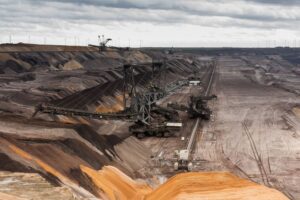The Australian Federal Budget 2025: Which Sectors Will Win and Which Will Lose?
![]() Ujjwal Maheshwari, March 28, 2025
Ujjwal Maheshwari, March 28, 2025
The 2025 Federal Budget has been released, sparking conversations across boardrooms, households, and political circles. Described as a “budget for uncertain times,” Treasurer Jim Chalmers has carefully balanced offering cost-of-living relief, strengthening national security, and managing inflation pressures. But who are the real winners and losers?
This year’s budget demonstrates Canberra’s commitment to energy transition, housing affordability, and defence readiness. However, some sectors—particularly higher education and discretionary retail—may be left questioning their position.
So, what are the biggest takeaways from the 2025 budget, and how will it reshape Australia’s economic landscape?
The Big Picture: Budget Overview
The 2025-26 Budget is expected to record a deficit of approximately $42.1 billion, reflecting ongoing economic pressures and government spending on key sectors such as defence, healthcare, and energy transition. But we’re not talking about a cash splash. With inflation still lingering above the RBA’s 2–3% target range, the government has opted for restraint in many areas.
The 2025 Federal Budget is projected to result in a deficit driven by increased investments in national security, infrastructure, and cost-of-living relief measures. Total government spending is projected to reach approximately $785.7 billion, with most of the growth earmarked for healthcare, defence, and energy. What’s clear is this: The Albanese government is playing the long game, trying to rebalance structural deficits without triggering another inflation wave.
Which Sectors Will Win?
Renewable Energy and Clean Tech
The Australian government is making a decisive shift towards a sustainable future with substantial investment over the next decade to accelerate the growth of clean energy industries. This funding, introduced under the Future Made in Australia Act, is set to support key sectors such as hydrogen production, solar panel and battery manufacturing, and the development of green metals.
This strategic move aims to strengthen Australia’s energy transition while reducing reliance on fossil fuels. Instead of merely exporting raw materials, Australia is positioning itself as a global leader in clean energy technology and manufacturing. Companies like Fortescue Future Industries, Vulcan Energy, and lithium miners are among the expected beneficiaries of this green revolution.
Defence and National Security
Amid escalating geopolitical tensions and increasing regional security concerns, the Australian government is prioritising defence and national security. The latest budget outlines a significant $50 billion boost over the next decade for the Australian Defence Force (ADF), covering crucial areas such as the development of nuclear-powered submarines under the AUKUS pact, enhanced cybersecurity measures, and advanced missile defence systems.
This increase in defence spending is not just about national security but also about bolstering Australia’s defence industry. Major defence contractors such as BAE Systems, Thales, and other Australian-based defence suppliers are poised to benefit from these investments, leading to job creation and technological advancements within the sector.
Aged Care and Healthcare
The aged care sector is receiving much-needed attention following the findings of the Royal Commission into Aged Care Quality and Safety. The government is allocating $2.2 billion to increase wages for aged care workers, improve service quality and accessibility, and enhance staffing levels to meet growing demands.
Beyond aged care, the broader healthcare system is also set to receive $3.5 billion in funding, which includes strengthening Medicare services, expanding mental health support, and investing in primary healthcare networks. With an aging population and increasing healthcare demands, these investments will provide immediate relief while laying the groundwork for long-term structural improvements.
Social Housing and Rental Relief
In response to Australia’s ongoing housing affordability crisis, the government is allocating an additional $9.3 billion over five years to build more social and affordable housing. This funding complements existing programs such as the Housing Australia Future Fund and the National Housing Accord, ensuring continued support for low- and middle-income Australians.
Additionally, the budget introduces enhanced Commonwealth Rent Assistance and new funding for crisis accommodation, aimed at providing relief for struggling renters and those experiencing housing insecurity. Property developers collaborating with government initiatives, as well as construction firms specialising in mid-tier and public housing projects, are likely to benefit from these policies. However, this investment is specifically directed towards affordable housing rather than luxury or high-end real estate developments.
Which Sectors Will Lose?
Higher Education and International Students
The higher education sector is glaringly absent from any major support this year. Despite mounting concerns over international student visa caps and university funding, the budget provides little in the way of direct relief or new initiatives. Visa restrictions, which now include annual quotas and tightened compliance rules, will likely hit regional universities and private providers the hardest.
What are the implications? The sector’s reliance on overseas students makes it vulnerable to policy shifts—and this budget offers little reassurance.
Discretionary Retail
With households still squeezed by inflation and interest rates, discretionary spending is forecast to remain subdued. There’s a cost-of-living package, including energy bill rebates and tax offsets, but it’s not expected to lead to a retail surge. Retailers focused on fashion, entertainment, or big-ticket items may struggle to maintain margins. While basics will sell, it’s the non-essentials that’ll feel the pinch.
Big Gas and Traditional Energy
While some may argue the government’s approach is “technology neutral,” there’s no doubt fossil fuel companies are under pressure. The PRRT (Petroleum Resource Rent Tax) has been tightened, and no new subsidies have been offered for gas expansion. Combined with the green energy pivot, this puts traditional energy players, especially gas exporters, on the defensive. We’re not talking about an existential crisis, but it’s a clear signal: Canberra is betting on clean energy as the future.
Other Key Takeaways
Small Business Support
There’s a mixed bag for SMEs. On one hand, the $20,000 instant asset write-off has been extended, and small businesses will benefit from lower energy bills via the rebate scheme. On the other hand, there’s no new relief on compliance or red tape. Still, digital adoption and cybersecurity funding are positives for tech-savvy small firms.
Taxation and Inflation Control
No sweeping tax reforms this year, but the Stage 3 tax cuts are set to proceed from 1 July 2025 despite earlier controversy. These cuts will mostly benefit middle- and high-income earners, potentially spurring consumer confidence.
Importantly, the government insists the budget is “fiscally responsible” and won’t add to inflation. Whether the RBA agrees remains to be seen.
What Does This Mean for Investors?
For investors, the budget’s focus on strategic sectors presents significant opportunities. Three key areas should be closely monitored:
- Green energy and hydrogen firms are now central to government policy. With long-term funding commitments and a push for energy transition, companies involved in lithium mining, battery production, and hydrogen development are likely to experience strong growth. The increased demand for clean energy solutions positions firms such as Fortescue Future Industries and Vulcan Energy at the forefront of this shift.
- Defence contractors, especially those with AUKUS exposure, stand to benefit from increased military spending. Companies like BAE Systems and Thales, which play a role in submarine development, cybersecurity, and missile defence, are poised for long-term gains. With defence spending now an industrial priority, this sector is becoming increasingly attractive to investors.
- Healthcare and aged care providers will benefit from new public funding. As the government directs billions into Medicare improvements, aged care workforce enhancements, and mental health initiatives, companies operating in these fields will see rising demand and potential revenue growth. This makes healthcare stocks a strong option for long-term stability.
At the same time, certain sectors face potential challenges. Education, gas, and consumer discretionary industries could see pressure on margins due to policy shifts and regulatory changes. Investors should consider reassessing portfolios to align with long-term government priorities and emerging opportunities.
Final Thoughts
The 2025 budget highlights key growth areas, with the biggest winners being clean energy, defence, healthcare, and social housing. Each sector is receiving significant government support, paving the way for economic opportunities and long-term structural improvements. Companies operating within these industries are well-positioned to benefit from this wave of investment, making them critical players in Australia’s future economic landscape.
While some sectors may feel overlooked or sidelined, others are well-positioned to ride this fiscal wave. In our view, understanding Canberra’s long-term direction is key to navigating the shifting sands of business, investment, and public policy in the year ahead.
What are the Best ASX Stocks to invest in right now?
Check our buy/sell stock tips.
FAQs: Australian Federal Budget 2025
- What are the biggest winners in the 2025 Budget?
Sectors such as renewable energy, defence, healthcare, and social housing are the clear winners, with significant funding increases and long-term strategic focus.
- Is the cost-of-living crisis addressed in this budget?
Yes. The budget includes energy rebates, increased rent assistance, and tax offsets aimed at relieving pressure on households, especially those with low to middle incomes.
- Why is the higher education sector considered a loser?
Because it received little direct support in this budget, despite facing challenges such as tighter student visa caps, rising costs, and increased regulation for providers.
- How will this budget affect Australian investors?
Investors should keep a close eye on government-backed sectors like clean energy and defence, which are likely to benefit from sustained public investment.
Blog Categories
Get Our Top 5 ASX Stocks for FY26
Recent Posts
Webjet Sinks 22 Percent After Softer H1 Results and Weak Domestic Demand
Webjet Falls 22 Percent After H1 Revenue Dips and Domestic Flight Demand Softens Webjet (ASX: WJL) opened down 22 percent…
Javelin Minerals Jumps 2,900 Percent on Capital Consolidation
A Sharper Share Register Sets Javelin Minerals Up for Its Next Corporate Stage Javelin Minerals (ASX: JAV) surged an extraordinary…
Why Are Droneshield Shares Dropping and Should You Be Worried
DroneShield Selloff Tests Nerves, But Fundamentals Tell a Different Story DroneShield (ASX: DRO) experienced a sharp selloff this morning that…



